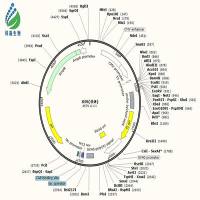Exploring the Concept of Clonality in Bacteria
互联网
554
Isolates of bacterial species that are indistinguishable in genotype are assigned as a clone, with the implication that they are descended from the same recent ancestor. Clones are difficult to define with precision since bacteria are not truly asexual, and recombinational replacements result in diversification of the ancestral genotype of a clone, to produce a cluster of increasingly diverse genotypes (a clonal complex). The rate at which clonal diversification occurs depends on the extent of recombination, which varies among bacteria, so that some species have rather stable clones (e.g., Salmonella enterica ), whereas in other species (e.g., Helicobacter pylori ) clones may be so transient that they cannot readily be discerned. Clones and clonal complexes need to be assigned by indexing genetic variation that is selectively neutral, and currently this is best achieved using multilocus sequence typing. Some species of bacterial pathogens are very diverse, whereas others are genetically uniform, and some are, in essence, a single clone of a mother species that has been raised to species status due to the distinctiveness of the disease it causes (e.g., Yersinia pestis, Salmonella typhi , or Burkholderia mallei ). The population structures of bacteria depend on the rate of recombination, and comparative measures of the extent of recombination during clonal diversification can be obtained from multilocus sequence typing data, as can measures of the longer-term impact of recombination. These studies show a wide range of recombination rates among bacterial species, and indicate that recombination in many bacteria has been sufficiently extensive that a reliable evolutionary history of the species cannot be inferred.









